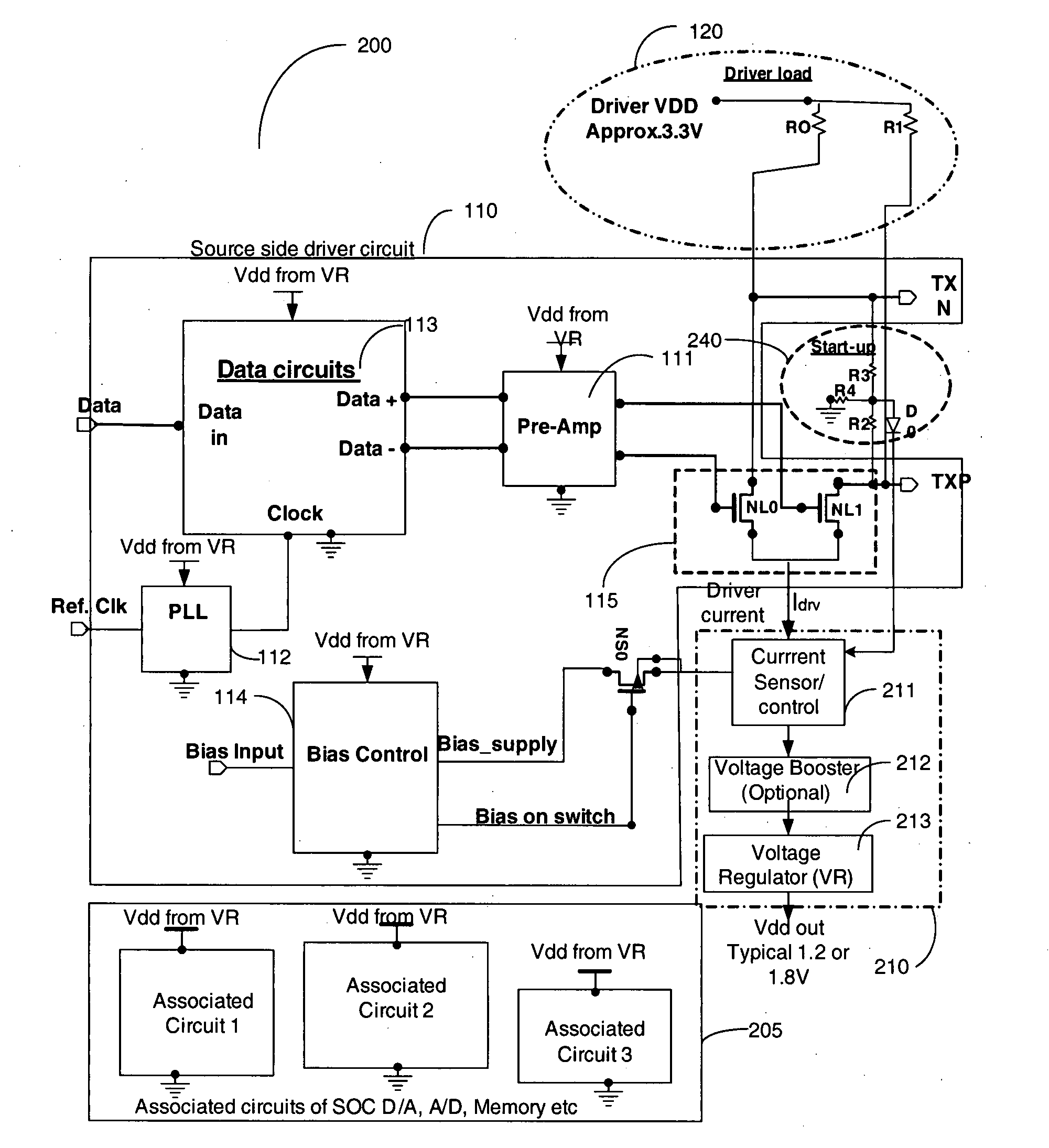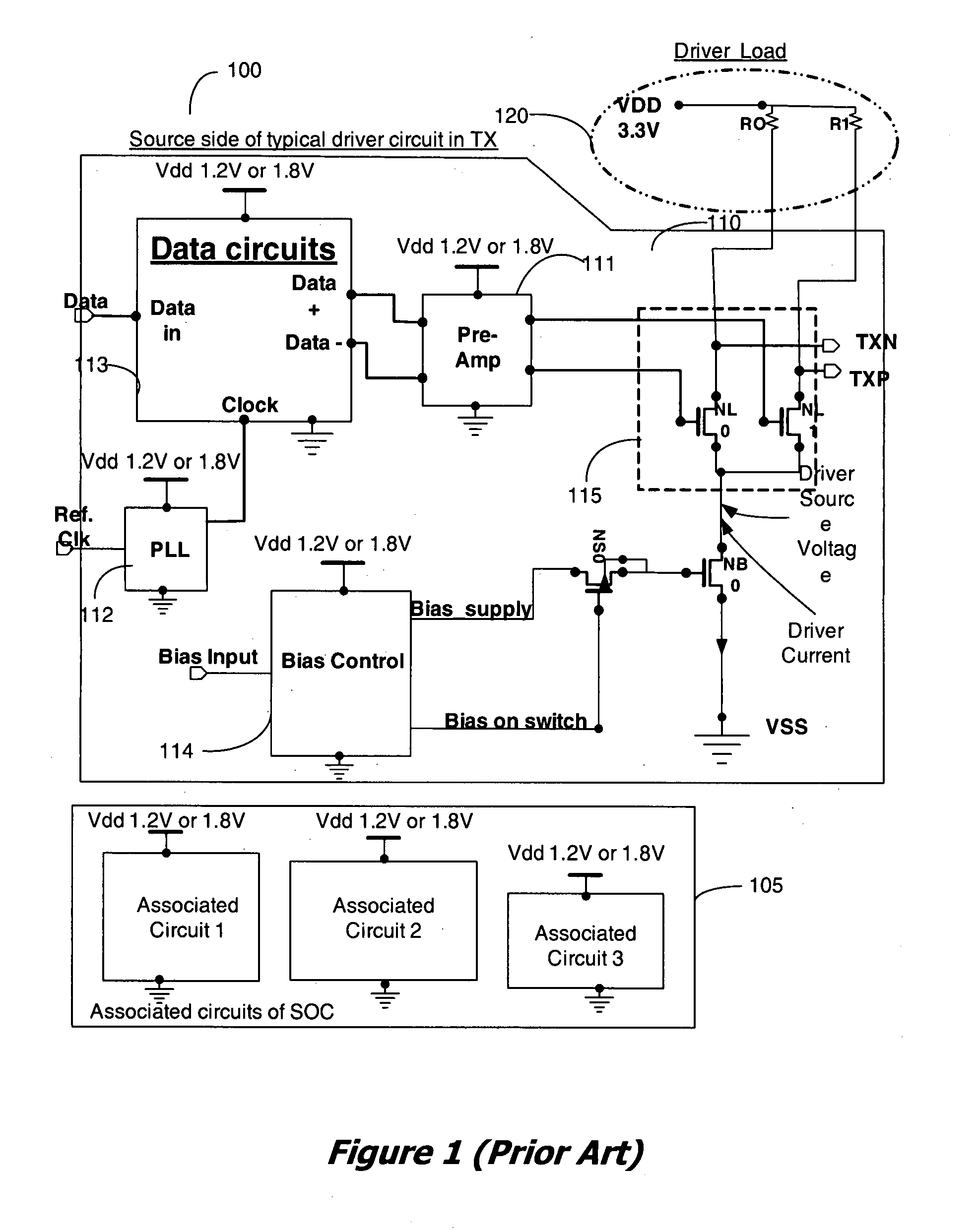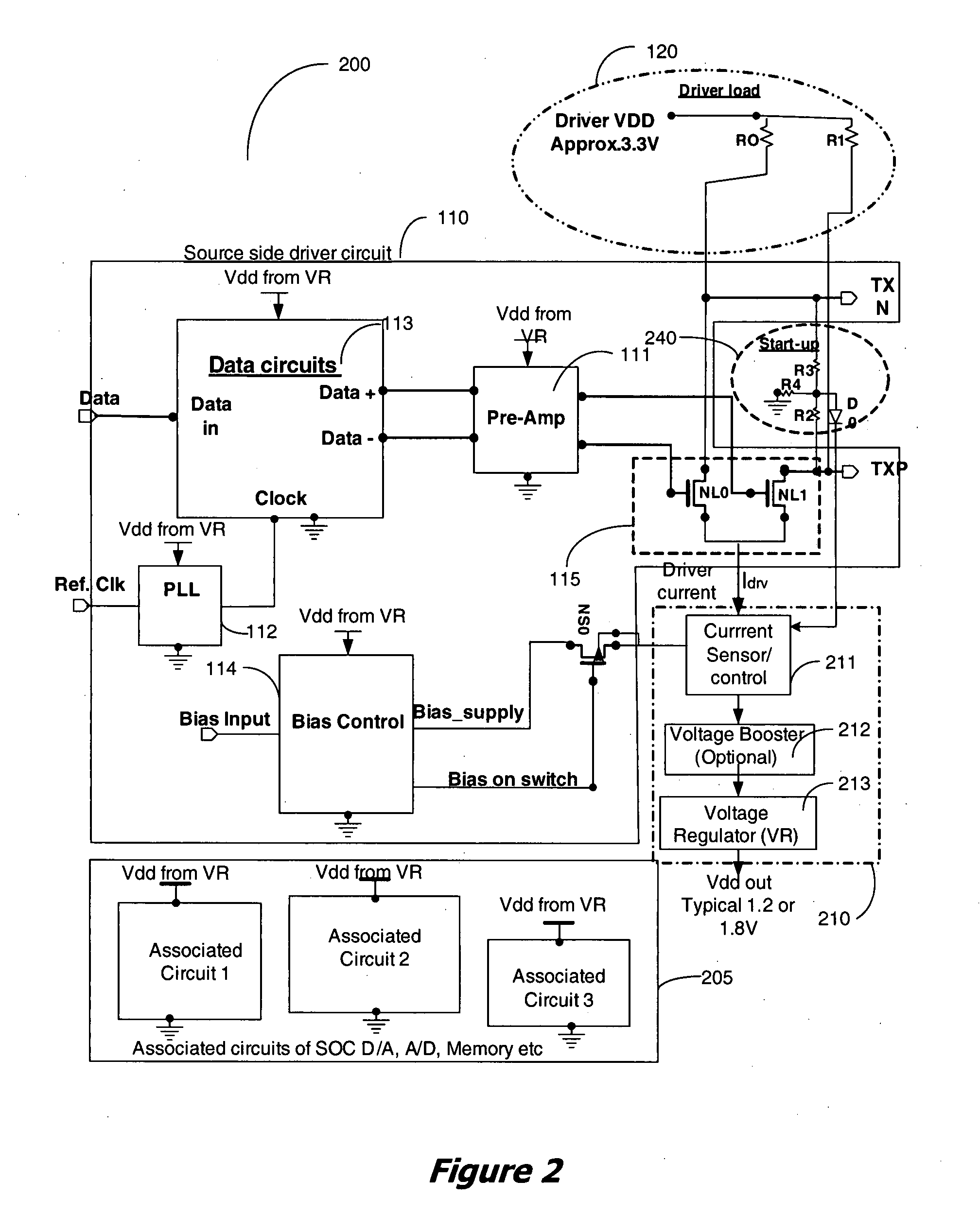Apparatus and method for recovery of wasted power from differential drivers
a technology of differential drivers and apparatus, applied in the field of apparatus and method for recovering wasted power from differential drivers, can solve the problems of power currently dissipation, consumption of power, and part of the power being wasted
- Summary
- Abstract
- Description
- Claims
- Application Information
AI Technical Summary
Problems solved by technology
Method used
Image
Examples
Embodiment Construction
[0013]An apparatus and method for supplying power to integrated circuits (ICs) of a system implemented as a system on a chip, (SOC) from the wasted power in low-swing high-speed differential line drivers used in the system, is disclosed. In a high speed line driver the load resistors of the driver are connected to a power supply, either the local power supply or the remote receiver power supply. DC power for the driver is supplied through these resistors. A large portion of this power, supplied from the power supply is wasted in the DC set-up circuit of the differential line driver. It is proposed to use this wasted power to power selected circuits of the ICs in the system. The use of this wasted power from the drivers for powering the circuits reduces the overall power dissipation of the system. The disclosed apparatus and method are applicable for integrated circuit (IC), a system on chip (SOC), chip on board (COB) implementations and other system and circuit level implementations...
PUM
 Login to View More
Login to View More Abstract
Description
Claims
Application Information
 Login to View More
Login to View More - R&D
- Intellectual Property
- Life Sciences
- Materials
- Tech Scout
- Unparalleled Data Quality
- Higher Quality Content
- 60% Fewer Hallucinations
Browse by: Latest US Patents, China's latest patents, Technical Efficacy Thesaurus, Application Domain, Technology Topic, Popular Technical Reports.
© 2025 PatSnap. All rights reserved.Legal|Privacy policy|Modern Slavery Act Transparency Statement|Sitemap|About US| Contact US: help@patsnap.com



